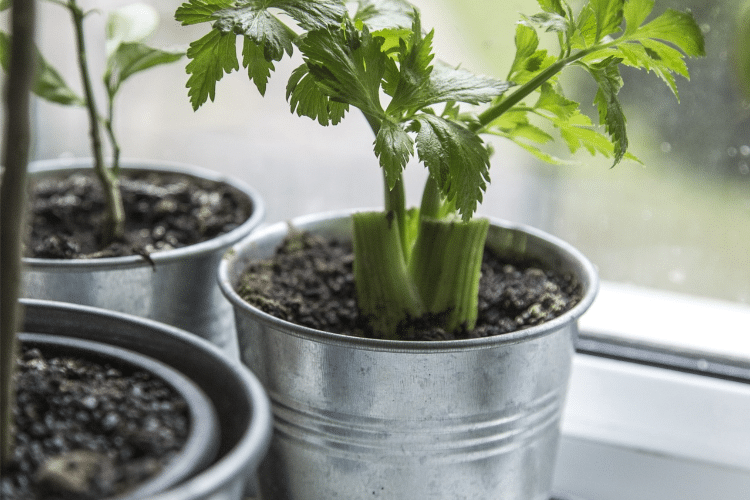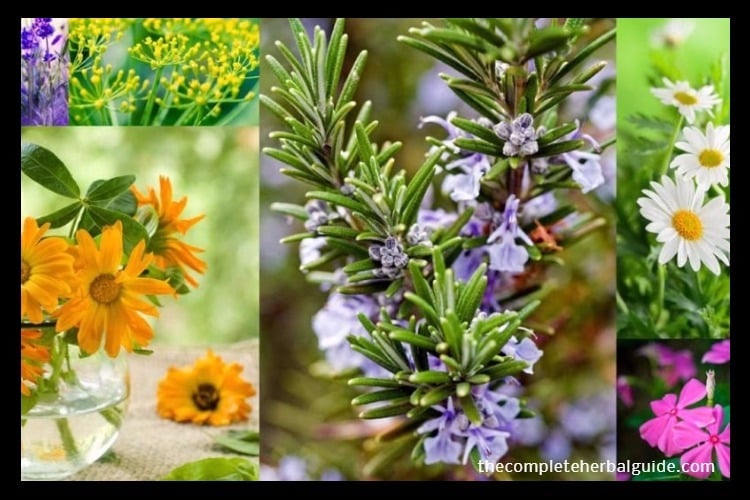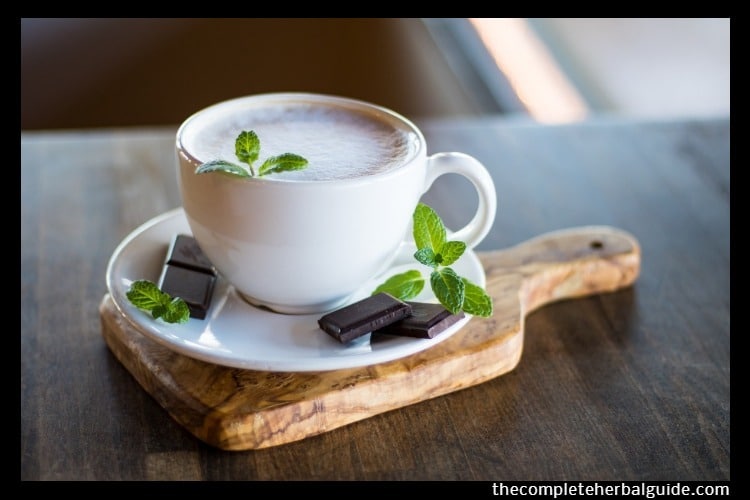
The Guide to Growing Herbs at Home
Table of Contents
History of Herbs
Herbs have played an important part in man’s life for countless years — in his politics, romance, love, religion, health, and superstition.
Celery was used by the Abyssinians for stuffing pillows. Ancient Greeks and Romans crowned their heroes with dill and laurel. Dill also was used by the Romans to purify the air in their banquet halls.
Some herbs were given magical properties, probably because of their medicinal uses. The early Chinese considered artemisia to have special charms. In France during the Middle Ages, babies were rubbed with Artemisia juices to protect them from the cold. Ancient Greeks used sweet marjoram as a valuable tonic and parsley as a cure for stomach ailments. Rosemary was eaten in the Middle Ages for its tranquilizing effects and as a cure-all for headaches.
Chives, still a common herb often found growing wild, had economic importance throughout Asia and many Mediterranean countries. Odd as it seems now, the early Dutch settlers in this country intentionally planted chives in the meadows so cows would give chive-flavored milk.
Mint, another popular herb today, also had its beginnings early in history. Greek athletes used bruised mint leaves as an after-bath lotion. In the Middle Ages, the mint was important as a cleansing agent and later was used to purify drinking water that had turned stale on long ocean voyages. Mint also was given mystical powers It was used to neutralize the “evil eye” and to produce an aggressive character.
Mustard was lauded by Hippocrates, the ancient Greek physician, and Shakespeare called it a desirable condiment in several of his plays.
Other herbs with importance dating back to early times include basil, saffron, sage, savory, tarragon, and thyme.
Early settlers brought herbs to America for use as remedies for illnesses, flavoring, storing with linens, strewing on floors, or burning for their pleasant fragrances. Some herbs were used to improve the taste of meats in the days before preservation techniques were developed. Other herbs were used to dye homespun fabrics.
Herb gardens were almost an essential feature of pioneer homes. They were placed in sunny corners near the house to be readily available to the busy homemaker. As the population of the new country grew, people from many nations brought herbs with them. This resulted in an exchange of slips, seeds, and plants.
Many herbs familiar to settlers from other countries were found growing wild in the new country. These included parsley, anise, pennyroyal, sorrel, watercress, liverwort, wild leeks, and lavender. American Indians knew uses for almost every wild, nonpoisonous plant, but they used the plants chiefly for domestic purposes — tanning and dyeing leather and eating.
Definition, Number, and Types of Herbs Available
 Early herb gardens were the major source of food seasoning. The need for homegrown herbs, however, declined with the advent of modern stores. Today, many gardeners are rediscovering the joy and pleasure of producing their own herbs.
Early herb gardens were the major source of food seasoning. The need for homegrown herbs, however, declined with the advent of modern stores. Today, many gardeners are rediscovering the joy and pleasure of producing their own herbs.
Definition of Herb
From the botanical viewpoint, an herb is a seed plant that does not produce a woody stem like a tree. But an herb will live long enough to develop flowers and seeds.
Number of Herbs Available
A true herb connoisseur can select from a wide variety of common and not-so-common herbs. For example, the E & A Evetts Ashfields Herb Nursery of Shropshire, England, lists 57 herbs, 16 mints, 17 onion-type herbs, 20 sages, and 17 thymes in a recent catalog. The Brooklyn Botanic Garden Handbook on Herbs lists 73 different types of herbs. Some herbs fit into one or more classifications according to use — culinary, aromatic, ornamental, and medicinal.
Culinary Herbs
According to Sacramento arborists for gardening services, Culinary herbs are probably the most useful to herb gardeners, having a wide range of uses in cooking. These herbs, because of their strong flavors, are generally used in small quantities to add flavor. Parsley, produced in the largest amount, is used mostly as a garnish. Next in popularity is sage — an important flavoring in pork sausage. Other popular culinary herbs include chives, thyme, savory, marjoram, mint, and basil.
Aromatic Herbs
Aromatic herbs have some novel uses and are not as popular to grow. Most have pleasant-smelling flowers or foliage. Oils from aromatic herbs can be used to produce perfumes, toilet water, and various scents. For home use, the plant parts are used intact, often to scent linens or clothing. When dried, many aromatic herbs will retain their aroma for a considerable period. Some common aromatic herbs include mint, marjoram, lovage, rosemary, and basil.
Ornamental Herbs
Ornamental herbs have brightly colored flowers and foliage. Many have whitish or light-colored flowers. Valerian has crimson blossoms while borage and chicory are blue-flowered. Such herbs as variegated thyme, mint, lavender and chives produce variegated foliage.
Medicinal Herbs
Medicinal herbs have long been thought to have curative powers. But while present medical knowledge recognizes some herbs as having healing properties, others are highly overrated. Medicinal herbs should be used carefully. Some herbs are harmless while others can be dangerous if consumed.
Herb Types
Herbs also can be classified as annuals, biennials, and perennials. Annuals bloom one season and then die. Biennials live for two seasons, blooming the second season only. Once established, perennials overwinter and bloom each season.
Herbs for Beginning Gardeners

Beginning herb gardeners may have a problem deciding which herbs to plant because of the large number of herbs from which to select. A quick check of your supermarket shelf will give you some idea of the types of herbs used in cooking and also will serve as a planting guide. Many cookbooks also offer information on the uses of various herbs as flavorings. Following is a good variety of flavors and uses of recommended herbs for beginners:
- Strong herbs — winter savory, rosemary, sage
Herbs strong enough for accent — sweet basil, dill, mint, sweet marjoram, tarragon, thyme
Herbs for blending — chives, parsley, summer savory
As your interest and needs increase, you can add to the variety of herbs in your garden. Keep in mind that herbs can be annuals, biennials, or perennials when selecting herbs to grow for the first time.
- Annuals (bloom one season and die) — anise, basil, chervil, coriander, dill, summer savory
Biennials (live two seasons, blooming the second season only) — caraway, parsley
Perennials (over winter; bloom each season once established) — chives, fennel, lovage, marjoram, mint, tarragon,
thyme, winter savory.

Herbs are the leafy parts of some plants that are used for seasoning recipes or medicinal purposes. There are many different kinds of herbs. An herb can spice up a dish or be used for healing. There are benefits to growing and using herbs. Herbs are easy to grow and they add color to your garden. They require little space and can be grown indoors and outdoors. Fresh herbs are healthy to eat and have more flavor than dried herbs from the store.

Basil
This herb is a part of the mint family and is also called Ocimum basilicum. Basil comes from a seed and can grow indoors under fluorescent light or outdoors. This herb flourishes best outdoors. The plant will do best indoors if it is on a south-facing windowsill. Do not place in a drafty area. A basil plant should be in an area with a lot of sunlight.
It is important to pinch off any dead leaves and stems that appear on the plant. Removing leaves off basil will help promote more growth. The plant basil 9 to 12 inches apart. Basil usually grows 12 to 18 inches high. It normally takes 5-10 days for seed germination. Basil needs rich, well-drained soil to be best nourished. Water basil with care and develop a watering schedule. Basil will die if it has too much water. Basil should be placed outside in the full sun. Bees, butterflies, and birds are attracted to basil plants because of their aromatic smell.






